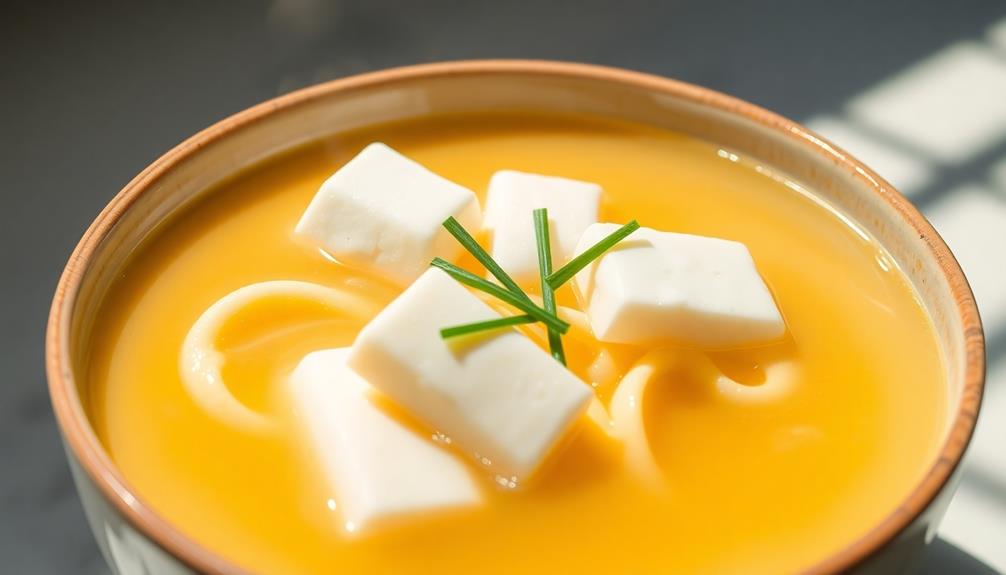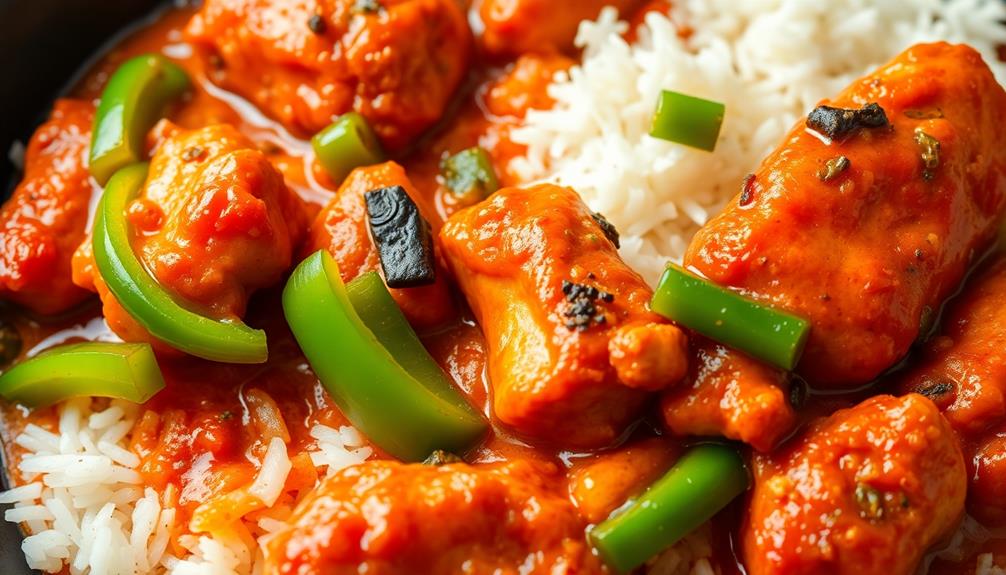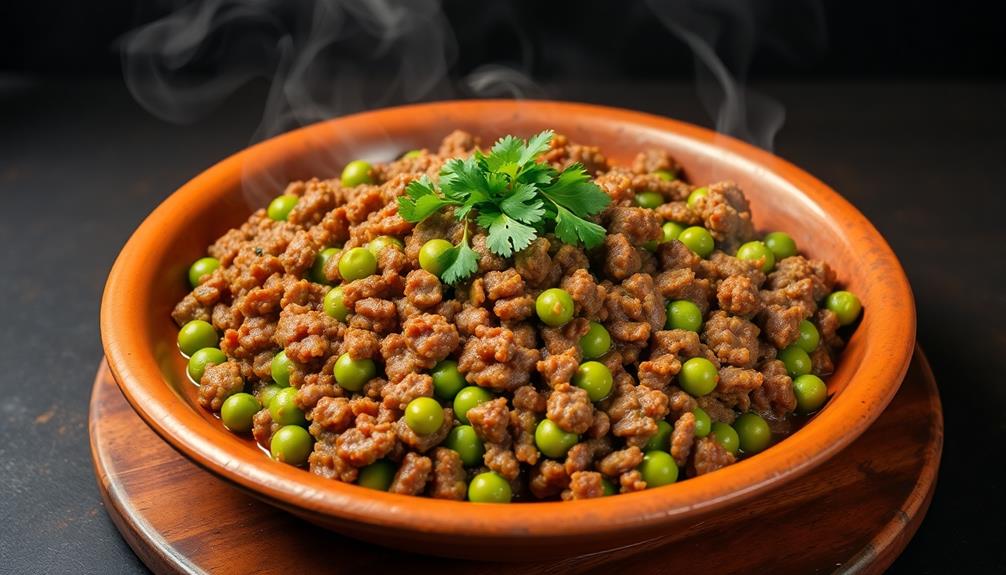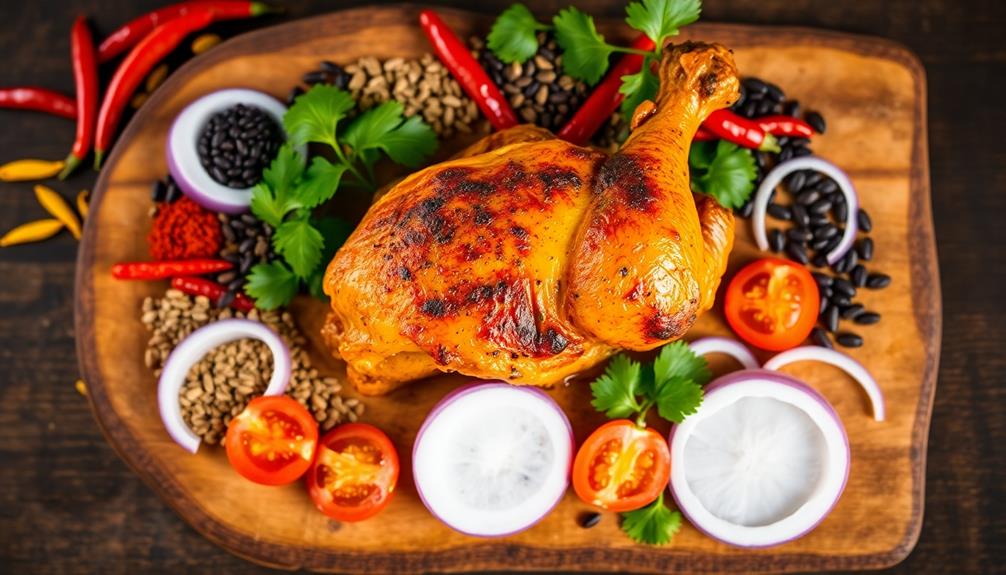Dive into the rich, aromatic world of fish curry, a beloved dish that showcases the diverse culinary traditions of coastal India. Whether you're craving the creamy coconut-based curries of Kerala, the fiery spices of Goa, or the tangy tamarind flavors from Tamil Nadu, this versatile dish has something for everyone. Tender fish fillets simmer in a harmonious medley of spices, creating a comforting and flavorful meal. Serve it with fluffy basmati rice or warm naan for a truly authentic experience. Eager to discover the secrets behind this mouthwatering dish? Keep reading to uncover the rich history and step-by-step guide to preparing the perfect fish curry.
Key Takeaways
- Fish curry has its origins in the coastal regions of India, featuring unique regional variations like coconut-based curries in Kerala and fiery curries in Goa.
- The dish is characterized by its rich, aromatic sauce that complements tender fish and can be served alone or paired with basmati rice, naan, or other Indian accompaniments.
- The primary ingredients include white fish fillets, coconut milk, and a blend of spices, with the cooking process involving sautéing aromatics, simmering with fish, and seasoning to taste.
- Blending a portion of the sauce can create a thicker, creamier texture, and experimenting with different fish types can introduce variety to the dish.
- The harmonious blend of spices and coconut milk offers a balance of creamy texture and tender fish, with the aromatic qualities elevating the overall dining experience.
History
The origins of fish curry can be traced back to the coastal regions of India, where the abundance of fresh seafood and a rich culinary tradition have long intersected.
For centuries, coastal communities have been perfecting the art of crafting flavorful fish curries, each with its own unique regional twist. Whether it's the coconut-based curries of Kerala or the fiery delights of Goa, the history of fish curry is a tapestry of cultural exchange and culinary innovation.
As traders and travelers traversed the Indian subcontinent, they carried with them the secrets of their local fish curry recipes, sharing and blending them with the flavors of the regions they visited.
This melting pot of influences has given rise to the diverse and delectable world of fish curry we know and love today. From the tangy tamarind-infused curries of Tamil Nadu to the fragrant mustard-tinged delights of Bengal, each bite of fish curry tells a story of India's rich gastronomic heritage.
Recipe
Fish Curry
Recipe
Fish curry is a beloved dish across many regions of the world. The rich, aromatic sauce complements the tender fish perfectly, creating a comforting and flavorful meal. This recipe showcases the classic flavors of a traditional fish curry, with a few modern adaptations to suit various dietary preferences.
Preparing a delicious fish curry requires a few key steps, but the end result is well worth the effort. The dish can be enjoyed on its own or paired with fragrant basmati rice, naan, or other Indian-inspired accompaniments.
Ingredients:
- 1 lb white fish fillets (such as cod, tilapia, or halibut), cut into chunks
- 2 tablespoons vegetable oil
- 1 onion, diced
- 3 cloves garlic, minced
- 1 tablespoon grated ginger
- 2 teaspoons ground coriander
- 1 teaspoon ground cumin
- 1 teaspoon turmeric
- 1 teaspoon chili powder (or to taste)
- 1 (14 oz) can diced tomatoes
- 1 cup coconut milk
- Salt and pepper to taste
- Chopped cilantro for garnish
Cooking Instructions:
In a large skillet or saucepan, heat the vegetable oil over medium heat. Add the diced onion and sauté until translucent, about 5 minutes.
Add the minced garlic and grated ginger, and cook for an additional minute, stirring constantly.
Stir in the ground coriander, cumin, turmeric, and chili powder, and cook for 2-3 minutes to toast the spices and release their aroma.
Pour in the diced tomatoes and coconut milk, and bring the mixture to a simmer.
Gently add the fish chunks, and let the curry simmer for 10-15 minutes, or until the fish is cooked through and flakes easily with a fork.
Season with salt and pepper to taste.
Tips:
For a thicker, creamier curry, you can blend a portion of the sauce before adding the fish. This will create a more velvety texture.
Additionally, you can experiment with different types of fish, such as salmon, shrimp, or a mix of seafood, to suit your preferences.
Serving the fish curry with basmati rice, naan, or a cooling raita can help balance the flavors and enhance the overall dining experience. To add even more variety to the meal, consider serving the fish curry alongside some traditional Indian vegetable biryani. The combination of the spicy and tangy flavors of the fish curry with the fragrant and savory biryani can create a truly memorable culinary experience. Whether you choose to enjoy the meal with just one side dish or a combination of rice, naan, raita, and biryani, the diverse flavors and textures will surely leave you wanting more.
Cooking Steps
Soak the tamarind in some warm water to get that lovely tangy flavor.
Next, let's grind up the spices into a smooth paste – this'll be the base of our curry.
Now, add the fish to the spice paste and give it a good stir.
Pour in the tamarind paste and let it all simmer until the fish is cooked through.
Step 1. Soak Tamarind in Warm Water
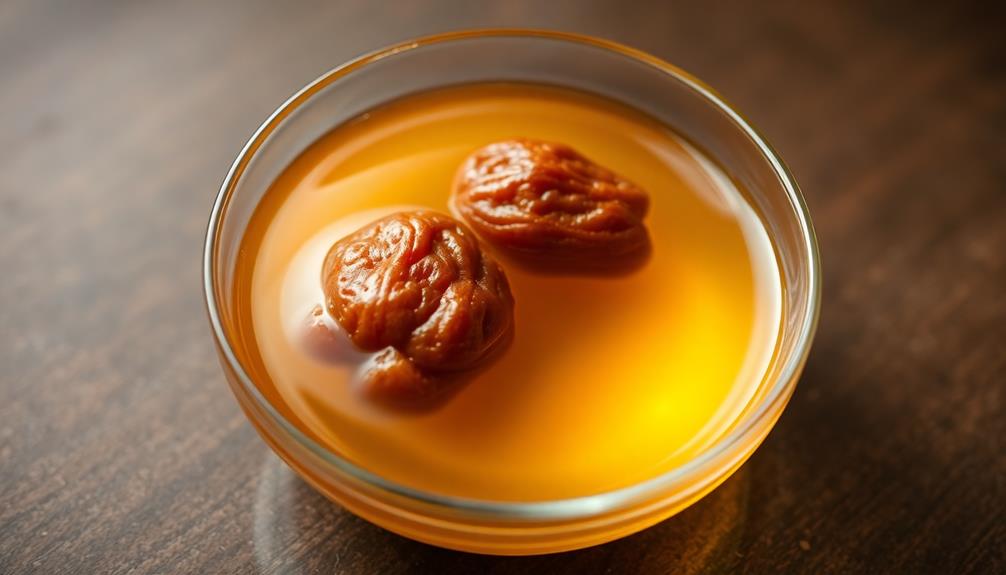
Next, you'll want to soak the tamarind in warm water. This step is crucial for the flavor of your fish curry.
Take the dried tamarind and place it in a small bowl. Pour in just enough warm water to cover the tamarind pieces. Let it sit for about 15-20 minutes, giving the tamarind time to soften and release its tangy, fruity essence.
As the tamarind soaks, gently press on the pieces with the back of a spoon to help them break down. This will make it easier to extract the pulp later on.
The water should turn a deep, reddish-brown color, indicating the tamarind is releasing its flavors. Once the time is up, you can move on to the next step of straining the tamarind water and collecting the flavorful pulp.
Be sure to save this liquid – it's going to add wonderful tanginess to your curry!
Step 2. Grind Spices Into a Paste
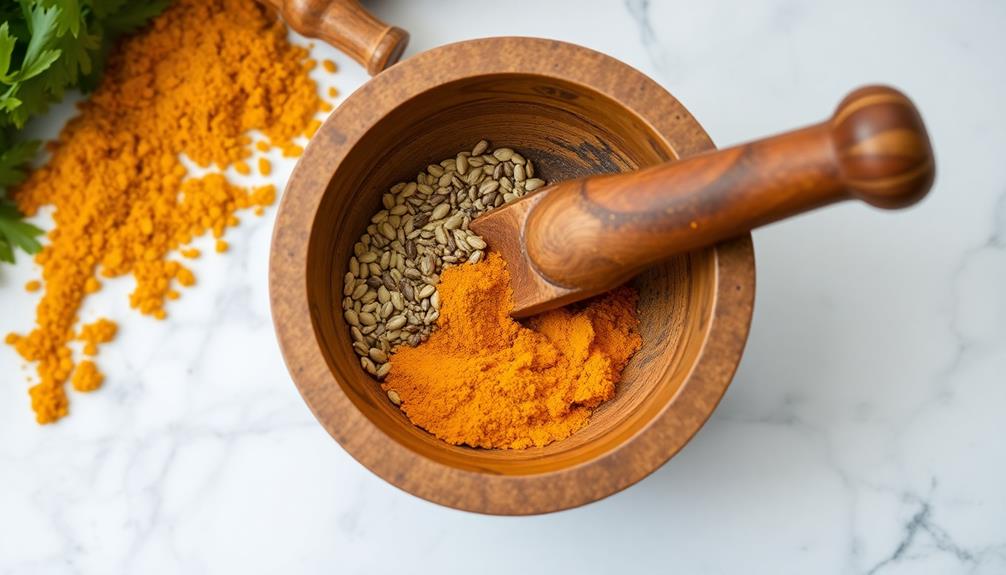
With the tangy tamarind water ready, you can now focus on preparing the aromatic spice paste. Gather your whole spices – coriander, cumin, fennel, and mustard seeds.
Place them in a mortar and pestle and start grinding. Use a circular motion to crush the spices into a fine powder. As you grind, the captivating aroma of the spices will fill the air, making your mouth water in anticipation.
Once the spices are finely ground, add a few tablespoons of the tamarind water and a pinch of salt.
Continue grinding until you've created a smooth, fragrant paste. This spice blend is the foundation of your flavorful fish curry, so take your time to ensure it's well-blended.
With the spice paste ready, you can now move on to the next step – sautéing the aromatics. Get ready to bring all the flavors together in a delicious harmony.
Step 3. Add Fish to Spice Paste
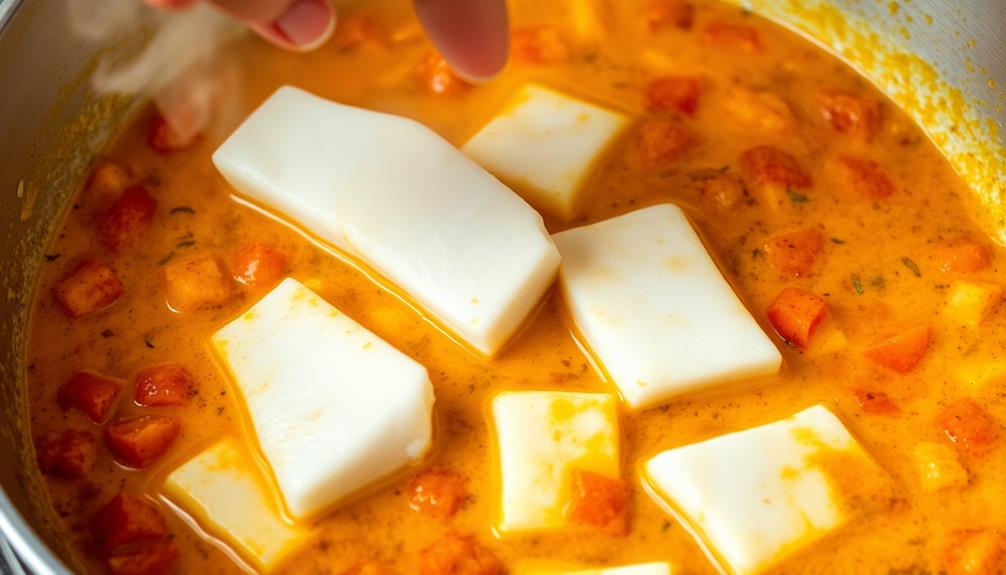
Add the prepared fish pieces to the vibrant spice paste, ensuring each morsel is evenly coated.
Gently fold the fish into the luscious mixture, taking care not to break the delicate fillets. The satisfying aroma of the aromatic spices will fill your kitchen, making your mouth water in anticipation.
Stir the ingredients together with a light touch, allowing the flavors to meld. Be mindful not to overwork the fish, as you want to maintain its tender texture.
Gradually add a splash of water or broth to the pan, just enough to create a creamy, saucy consistency.
Simmer the curry gently, letting the flavors deepen and the fish absorb the captivating spices. Adjust the seasoning to your taste, adding a pinch of salt or a squeeze of lemon juice if needed.
Now, your flavorful fish curry is ready to be served over a bed of fragrant rice, waiting to delight your senses.
Step 4. Add Tamarind Paste
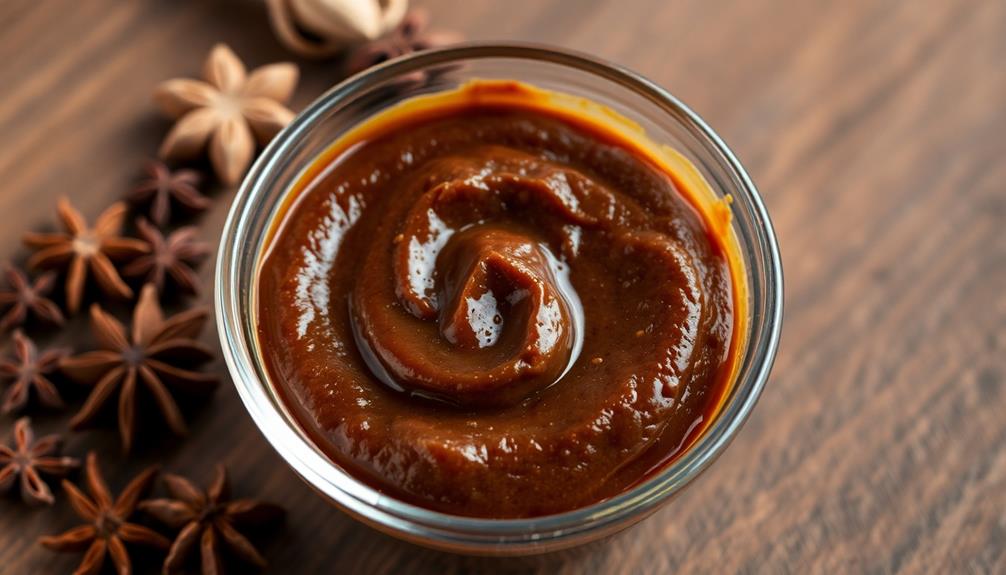
Tamarind paste lends a delightful tangy-sweet note to the curry, elevating the flavor profile.
It's the perfect ingredient to balance out the spices and provide a depth of flavor that'll have your taste buds dancing. Simply add a couple of tablespoons of the paste to the spice mixture and stir until well combined.
Don't be afraid to adjust the amount to suit your personal preference. Start with less and you can always add more if you want an extra punch of tanginess.
The tamarind will seamlessly blend with the other ingredients, creating a harmonious and mouthwatering dish.
Be sure to give the curry a good stir after adding the tamarind, ensuring every bite is infused with that delightful tartness.
Now, let the curry simmer and allow the flavors to meld together, filling your kitchen with the irresistible aroma.
Step 5. Simmer Until Fish Is Cooked
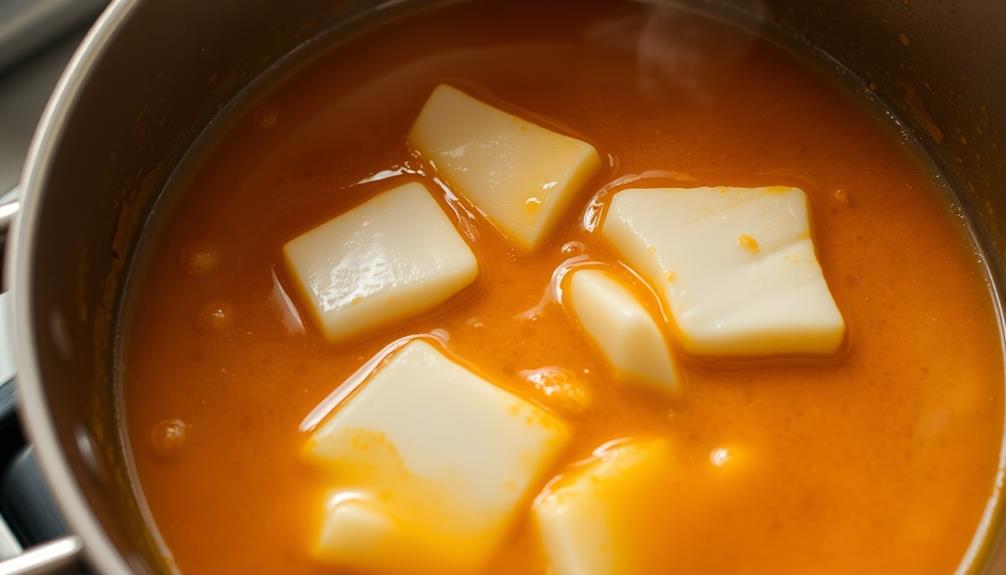
Once the tamarind's tantalizing tanginess has been incorporated, it's time to let the fish simmer until it's cooked to perfection.
Reduce the heat to medium-low and let the curry gently bubble away. This slow cooking process allows the flavors to meld together beautifully. Keep a watchful eye, stirring occasionally to prevent anything from sticking to the bottom of the pot.
The fish will slowly transform, becoming tender and flaky as it simmers. This can take about 10-15 minutes, depending on the type and size of the fish you're using. You'll know it's done when the fish easily flakes apart with a fork.
Resist the urge to overcrowd the pan – give the fish some breathing room so it can cook evenly.
Once the fish is cooked through, you can turn off the heat. The curry will continue to thicken slightly as it rests.
Now it's time to grab your plates and enjoy the fragrant, flavorful result of your culinary efforts!
Final Thoughts
With the fish curry now prepared and ready to serve, consider a few final thoughts on this delicious dish. This vibrant, aromatic curry is sure to delight your taste buds and bring a burst of flavor to your meal.
The combination of the tender fish, fragrant spices, and creamy coconut milk creates a harmonious balance of textures and tastes.
Don't forget to serve the curry with a side of fluffy basmati rice or freshly baked naan bread to soak up every last drop of that tantalizing sauce.
And, if you're feeling adventurous, try garnishing the dish with a sprinkle of chopped cilantro or a squeeze of fresh lime juice for an extra touch of brightness.
As you savor each spoonful, allow the flavors to transport you to the vibrant coastal regions where this dish originates.
Enjoy the comforting warmth and the satisfying feeling of indulging in a truly authentic and delectable fish curry.
Frequently Asked Questions
What Is the Best Type of Fish to Use in Fish Curry?
When it comes to the best fish for curry, you've got lots of tasty options! Firm, meaty fish like cod, halibut, or tilapia work great as they hold their shape well in the spicy sauce.
For a more delicate flavor, try salmon or snapper.
And if you're feeling adventurous, go for something like mahi-mahi or swordfish.
No matter which fish you choose, it's sure to make a delicious and satisfying curry dish!
How Can I Make the Curry More Spicy or Milder?
To make your curry spicier, simply add more chili peppers or chili powder.
For a milder flavor, use less of these ingredients or substitute with paprika or turmeric.
You can also adjust the amount of other spices like cumin, coriander, and ginger to tweak the heat level.
Don't be afraid to experiment until you find the perfect balance of flavors that suits your taste buds!
Can I Use Frozen Fish for Making Fish Curry?
Yes, you can absolutely use frozen fish to make a delicious curry!
Frozen fish is a great option – it's convenient, affordable, and still packed with flavor. Just be sure to thaw it completely before cooking.
When you're ready, simply add the frozen fish directly to your curry and let it simmer until cooked through.
This easy swap will save you time and effort without compromising the taste of your dish. Go ahead and give it a try!
How Long Can I Store Leftover Fish Curry?
You can store leftover fish curry in the fridge for up to 3-4 days!
Just make sure to put it in an airtight container.
When you're ready to enjoy it again, simply reheat it on the stove or in the microwave. Easy-peasy!
The flavors might even get better as the ingredients meld together. Yum!
Just be sure to give it a good sniff before digging in, to make sure it's still fresh and delicious.
Does Fish Curry Taste Good With Rice or Bread?
Fish curry is a delicious and versatile dish that can be enjoyed with both rice and bread!
You can't go wrong either way. Rice provides a fluffy, neutral base that allows the bold flavors of the curry to shine.
Bread, on the other hand, is perfect for sopping up every last drop of that savory sauce.
Give both options a try and see which one you prefer – they're both tasty ways to enjoy this flavorful dish!

